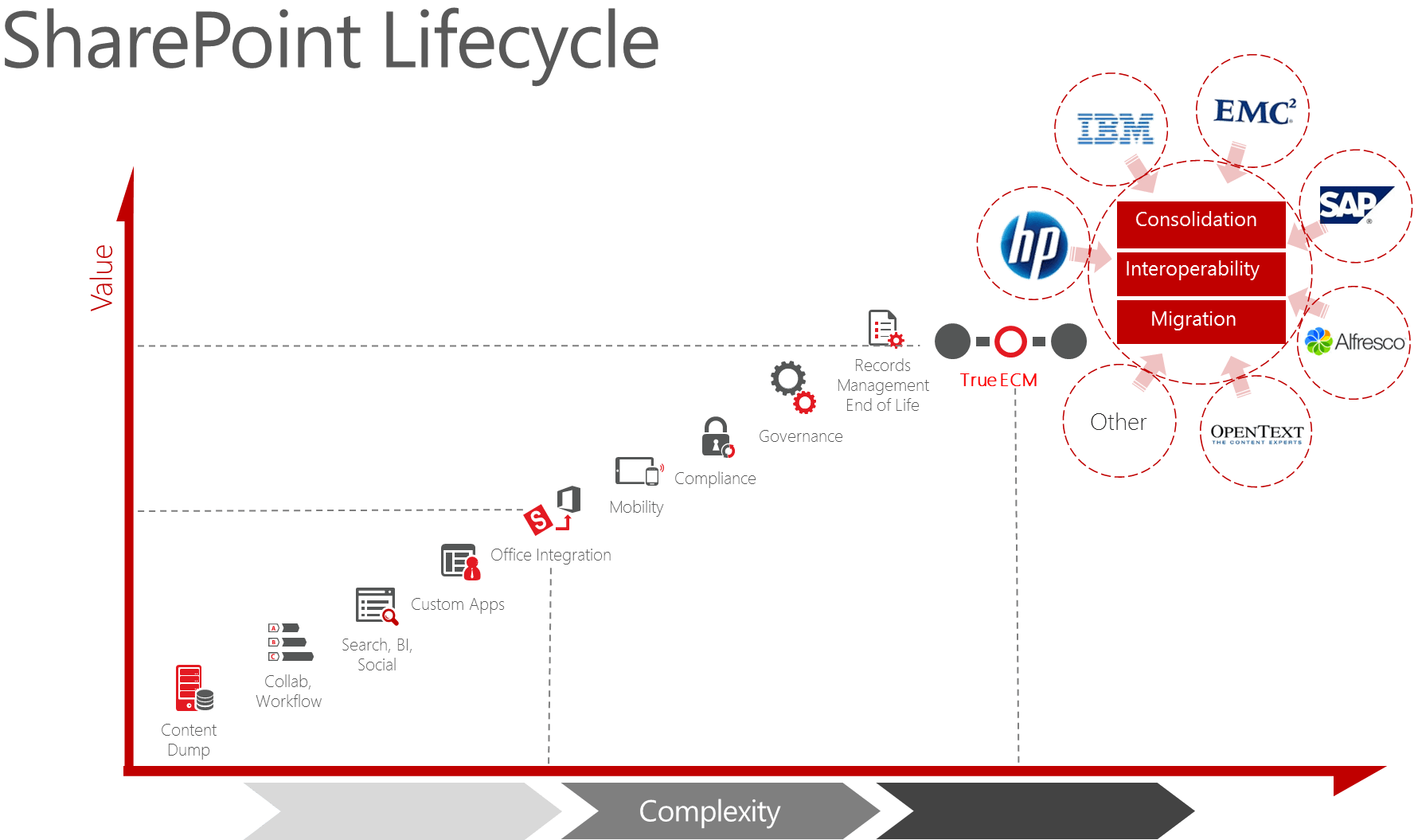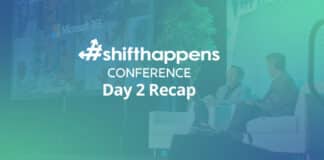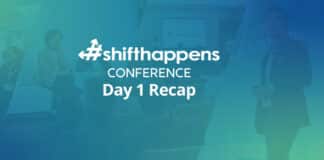From basic content repository to a true Enterprise Content Management (ECM) platform, AvePoint has helped more than 14,000 organizations achieve their ECM initiatives using Microsoft SharePoint by developing innovative technologies across the following key pillars:
- Infrastructure Management
- Governance
- Compliance
- Mobility & Productivity
- Information Lifecycle Management
- Integration, Consolidation, and Interoperability
Each of the above has been developed to support our customers through collaboration pain points as they move through the enterprise content lifecycle and mature in their adoption, integration, consolidation, and interoperability of disparate silos of information. The holy grail of this quest is what we all know as ECM, which is described by Gartner as being “both a strategic framework and a technical architecture that supports all types of content (and formats) throughout the content lifecycle.”

This article will provide insight into how organizations can leverage six technology keys to achieve a cohesive and tightly integrated collaboration strategy across the organization – the capabilities of which will rival any ECM platform on the market today. It will highlight how to reduce costs, time to implementation and adoption, as well as provide a strategy for maximising the return on investment, through leveraging expertise and industry knowledge gained by AvePoint since it began working with SharePoint when it was called Tahoe back in 2001.
Infrastructure Management
The first and possibly the most fundamental key in any ECM Platform, is that of managing the foundation that it’s built on.
“You can’t build a great building on a weak foundation. You must have a solid foundation if you’re going to have a strong superstructure.”
Regardless of where your organization’s ECM ambitions reside, whether it be on premises, in the cloud or hybrid, it is vital to ensure that your information assets are adequately managed. AvePoint has been a leader in helping customers collaborate with confidence since 2001, by providing SharePoint infrastructure management solutions in the following key areas:
- Data protection, disaster recovery, and high availability for business critical data
- Administration and policy enforcement
- Content management, integration, and consolidation
- Storage management and optimization
- System, usage, and content reporting
The 2014 EMC Digital Universe Study estimates that the amount of data in our digital universe is expected to grow from 4.4 trillion GB in 2013 to 44 trillion GB by 2020. This emphasises the importance of having robust information infrastructure management in place and provides the key to a solid foundation for a true ECM platform across all technology deployment scenarios. The system must deliver consistent uptime, stability, performance, and insight that inspires end user trust and platform adoption.
Governance
The following quote by Sir Adrian Cadbury from the “1992 UK Commission Report: Corporate Governance”, underpins the relevance of a comprehensive governance strategy within organizations today:
“Corporate governance is concerned with holding the balance between economic and social goals and between individual and communal goals. The governance framework is there to encourage the efficient use of resources and equally to require accountability for the stewardship of those resources. The aim is to align as nearly as possible the interests of individuals, corporations and society.”
As such, the second key to a successful ECM implementation is governance. This has been apparent at a number of customer engagements where AvePoint facilitated technology adoption and implementation roadmaps. For a large company in Australia, for instance, this particular roadmap exercise consisted of workshops that focused on three key areas: governance, compliance, and adoption.
Throughout the two days of business and technical workshops, a lack of passable corporate, IT, and system governance was acknowledged by staff at all levels of the organization. The outcome was technology sprawl and system duplication, which had occurred over an extended period of time and eventually crippled the IT budget.
In this organization’s case, three separate document management systems (DMS) had been procured by different departments without the consultation of the IT department. Each of these systems required their own maintenance, training, and support, which subsequently had to be provided by the IT department. If adequate governance frameworks had been in place, this could have been avoided.
Backed by the information gathered through direct interaction with the customer’s business and technical audiences, AvePoint provided a framework for implementing steering committees that would address business requirements, consolidate systems, and align ECM initiatives against existing investments. The outcome would simplify the IT landscape and reduce ongoing maintenance, operational, adoption, and training costs.
Along with this, AvePoint suggested a definition of a corporate governance strategy with overarching principles, which would subsequently feed into IT and system governance plans. One of these principles was that all enterprise content should reside within a single repository. A simple policy such as this could enable the organization to consolidate its DMS technologies and ensure that a cohesive strategy is formed, which prevents duplication and provides a single source of informational truth across the enterprise.
Through consistent experiences similar to the example provided above, it is widely emphasised that the IT landscape can quickly become unwieldy, complex, and unmanageable without governance at all levels of the organization. Thus, the second key in true ECM enablement is to ensure that good organizational governance is in place and that the enforcement of policies is automated at the start of the information lifecycle. AvePoint’s DocAve Governance Automation along with a governance framework can assist organizations in removing the headaches associated with the enforcement of policies.
Compliance
Compliance is a component that must form part of any ECM platform. Non-compliance can hold severe penalties, and adequate provisions for information compliance provides organizations with safeguards against data loss, breaches, and financial penalties.
A good example of penalties for non-compliance can be highlighted in the Privacy Amendment Act 2012 (No. 197, 2012), which has been passed through the Australian Parliament and took effect on March 12, 2014. This new legislation increases the power of the Australian Privacy Commissioner and “introduces significant obligations for the protection of personal information held by Australian organizations, and material financial penalties”.
Organizations in breach of this legislation face fines of a $170 for each penalty unit, and “allows the Privacy Commissioner to request a court levy a civil penalty of up to $1.7 million for an organization found to be in breach of the Privacy Act.”
Privacy is not the only external policy or legislative based threat that organizations face today. Consider the regulations such as Payment Card Industry (PCI) security standards, accessibility, or more internal compliance measures such as operational security as additional examples. The word compliance is broad and can have different meanings to different people within different organizations, depending on country-specific legislation or industry-specific legislation, and in many cases it can be a combination of both.
All things considered, no platform can be measured as a true ECM platform unless it has considered what compliance it must adhere to and whether it is able to comply at all.
To streamline compliance, we must streamline ECM. By limiting data repositories, we can reduce the potential for data leakage and lower data loss prevention (DLP) costs across the organization. DLP technologies such as AvePoint’s Compliance Guardian can assist in reducing the risk in ECM platforms by automating information interrogation, providing risk heat map reports, as well as automated remediation.
Mobility & Productivity
Key four in our true ECM journey is about empowering the end users of our corporate systems to work freely across devices and systems, regardless of location. End user expectations have intensified due to devices such as smart phones and tablets as well as cloud services such as Facebook, Twitter, and Instagram, to name just a few.
From the EY Digital Australia State of the Nation 2014 Consumer Survey, 2014 was noted as, “The year mobile took over.” As part of this survey, a question was posed to take a comprehensive look at how users decide to access the internet. The summary below outlines the results of this survey question:

Information is now expected to be accessed anywhere and at any time, and this has presented organizations with a number of new challenges. The modern digital organization must strike a balance between end user freedom and administration trust for corporate information assets. A recent survey by Dimension Data found that 77 percent of participants believed that, “Data security and user privacy concerns are the biggest challenge they face when they build and implement a mobility strategy.”
With services such as Box, Dropbox, and OneDrive making inroads into the organization, it is even more important than ever to consider an integrated end to end ECM strategy that considers all of the other five keys addressed in this article.
A good example of these challenges are data sovereignty, as described in this TechTarget article, “Australian businesses need to be aware that US companies providing ‘hard drive in the sky’ storage, even if that infrastructure is based in-country, may be subject to foreign government data access laws and Acts.” It is due to this that AvePoint is frequently approached by organizations to assist with the challenges that they face in securing multi-platform file sharing repositories.
This scenario was highlighted at a recent engagement at a financial services organization where cloud storage services were being utilised to support financial services processes. Stringent IT controls prevented external collaboration from their existing DMS system and e-mail did not support the document sizes that were being shared. As a result, the organization was forced to find alternative methods for sharing their information, all of which were uncontrolled and unsecured. This raised concerns around data sovereignty, privacy and information security. AvePoint Perimeter provided the capability by enabling secure access and file sharing for SharePoint across IOS, Android, and Windows Phone devices, whilst providing information security and enterprise content management for the company’s information assets.
Information Lifecycle Management
The National Archives of Australia (NAA) is expecting that by 2015, “information that is ‘born digital’ – that is, information that is created using computers or other digital devices – will be stored and managed digitally and subsequently transferred in digital formats to the National Archives.”
The fifth key to empower true ECM in light of the above, is to provide end-to-end electronic information lifecycle management. This can only be achieved by considering the “creation” and “destruction” of content and all of the systems in which this occurs across the organization.
Clearly, the fewer systems we need to consider, the easier this will be. This is also highlighted further by the NAA who stated that, “it is important to note that digital transition doesn’t necessarily require investment in new technology. There are significant achievements to be made through improved understanding and use of existing technology.”
The Digital Transition Policy in Australia aims to shift government organizations from hard copy based records management to true digital information and records management systems. The core reasoning behind this, as stated by the NAA, is “to reduce costs for storage, search, and retrieving records as well as the costs of legal discovery and freedom of information requests. It is an essential part of effective and efficient government and good governance.”
Information lifecycle management is a critical cornerstone of any ECM system because it affects how information is generated and governed as well as how it must comply and, ultimately, how it should be retained or destroyed.
“We’re not in an information age anymore. We’re in the information management age.”
Similarly, information lifecycle management is just as relevant for the private enterprise as it is for government organizations. In the case of the private enterprise, the reasons may not be legislative or regulatory based, but instead based on best practices for information management.
According to a report by the McKinsey Global Institute, “The average office worker spends 28 hours a week – or nearly 1,500 hours a year – writing emails, searching for information and attempting to ‘collaborate’ internally.” The implications of this are fairly obvious. However, the remediation is less so.
Through experience gained from helping customers with data management challenges over the last 14 years, AvePoint has developed a number of best practices and technologies that address these concerns. A few of these are outlined below:
- Information management starts with good governance and enforces policies such as version control (which is often left un-configured by accident) – the enforcement of which can reduce content generation based on pre-defined rules. Less content means less to search.
- Information management makes provisions for proper classification and security assignment which can improve search results and target content to relevant users.
- Information management strategies that considers records management will ensure that expired content is archived or disposed of, which will also yield more relevant search results.
Ease of retrieval is not the only consideration when building an information management strategy. It is as important to ensure that information workers can contribute easily to data repositories. If information is stored locally and not within the corporate DMS, then it is not an asset of the organization.
Information lifecycle management ensures that information is classified, secured, and managed from creation to disposal to increase user productivity and to reduce data management challenges.
Integration, Consolidation, and Interoperability
There is no point taking nine months to build an orphaned system. It might be the most advanced and feature-rich system ever created, but if no one can use it and it doesn’t make someone’s daily job easier, then what’s the point?
In most organizations today, content is typically generated in Office applications such as Microsoft Outlook and Word. The simple fact is that workers today live in email and document authoring tools and information strategies should be built around content generating sources. What is capturing your information in the background for long term retention is transparent to the end user. With this in mind, we can start to appreciate that the underlying systems are of less importance. However, they do provide the foundation for our superstructure.
When designing ECM Systems, we should not focus on a system’s capability or features independently. Instead, we should look at our technology portfolio as a whole and assess where integration could increase time to implementation and reduce costs.
“IT spending will reach $3.8 trillion next year as billions of things get connected”
AvePoint has been innovating in the integration and consolidation space by developing SharePoint migration and integration tools for over 15 source systems. Further to this, AvePoint has empowered these technologies with expert services that combined make use of people, process, and technology to deliver unrivalled capabilities.
A good example of this is highlighted by a recent engagement with an Oil and Gas organization, where there was a requirement for a migration to Office 365 for 10TB of eRoom and Documentum data.
To meet the strict timelines of the project, AvePoint architected and implemented a 24/7 Migration Factory, consisting of 50 Azure migration Virtual Machines, 15 migration engineers, 5 developers, 5 UAT testers, and a dedicated project manager. The timeline was met with phenomenal full fidelity migration speeds, that reached up to 250 gigabytes (GB) of migrated data in one day.
In addition to providing consulting services to help organizations integrate systems, AvePoint has embraced this to provide the sixth key for developing a successful ECM platform, through tools such as AvePoint Office Connect to seamlessly integrate SharePoint into the tools the workers use every day, DocAve Connector to easily connect SharePoint to legacy file shares, and DocAve Cloud Connect to integrate SharePoint Server and Box.
Conclusion
By implementing the six keys addressed in this article, you can empower your organization with a true ECM superstructure based on the SharePoint platform. AvePoint provides options for tightly integrated system that is based on premises, in the cloud, or through a hybrid deployment across platforms and devices. It will empower end user freedom and accelerate productivity whilst maintaining security and compliance for information assets throughout their entire lifecycle.
AvePoint Client Services can further reduce the total cost of ownership for your ECM initiatives by developing governance, compliance, and information management roadmaps. These roadmaps assists our customers to identify opportunities for consolidation, integration, and interoperability of systems that streamlines the IT landscape. Technology Gap Analysis uncovers opportunities for standardising on the Microsoft stack in which many organizations are already fully invested. The end result is a simplified support, maintenance, and training framework across the organization.
AvePoint brings a wealth of knowledge and experience to organizations whom are looking to implement an end to end Information Management Platform (IMP) and by leveraging the six keys addressed in this article along with AvePoint technology and services, this can now be achieved for the first time through a single vendor.





Great article, the references and examples are great. I have been getting more requests for user stories so this will come in handy. This sets out a roadmap to phased approach to ECM that is easily applicable. I have been hearing recently from customers that classification and user productivity have been resonating. Ease of use of all these systems is a must have when implementing ECM. The value of proper classification is compounded by automation in that it makes the application of the metadata non-intrusive plus the additive value of improved search, business process workflows, content grooming and records management. It is foundational in that it seeds more and more automation in the environment promoting user productivity.
Thanks Edmund, I am glad that this will be useful.